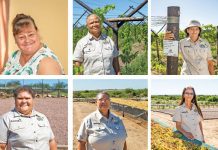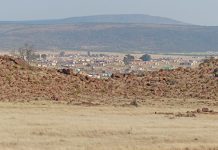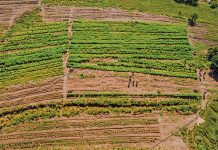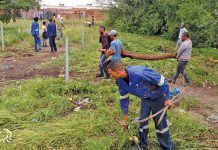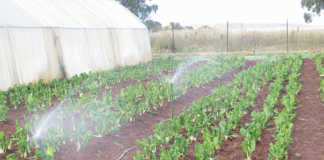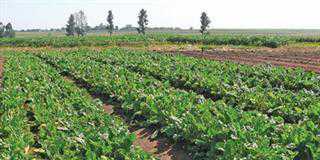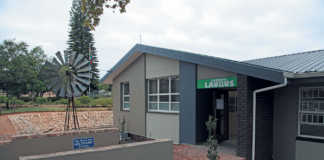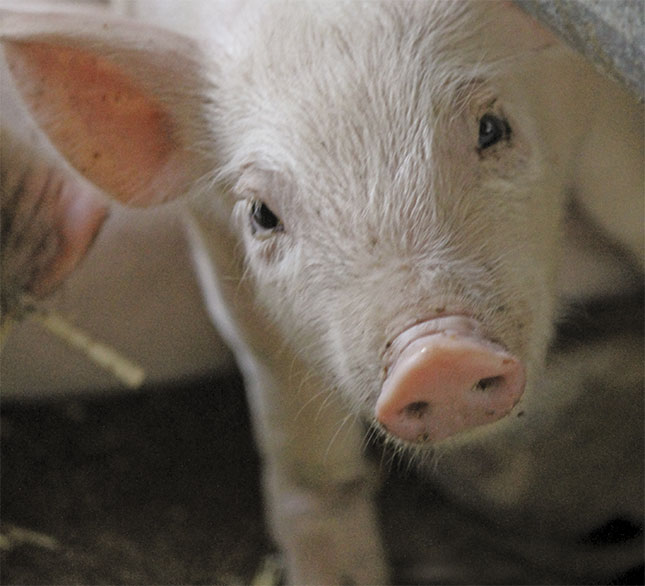
“It was never my dream to be a farmer, but when the opportunity came my way it was too good to let it pass me by.” So says Marius Herman, who is quick to admit that the circumstances that brought him to farming were far from ideal. He grew up in Oudtshoorn, where he worked as a welder. In 1998 he was retrenched and spent months fruitlessly job hunting. Then he and his wife Johanna heard of the possibility of work on a wine farm between Kraaifontein and Stellenbosch. Realising that they had little choice, they packed up their belongings and relocated.
READ:The many advantages of pigs
Opportunity knocks
The couple arrived at Klein Bottelary Farm during the harvest, and Marius was employed as a driver for Kosie Fisher of Fisher Boerdery, transporting wine grapes from the farm to the cellar. They settled into their new lives and for the next eight years Marius remained a driver on the farm. Then in 2007, Kosie’s son, who was running a small piggery on the farm, decided to sell his herd.

Marius Herman
“Suddenly, I saw the opportunity to start my own business,” recalls Marius. “No one was more surprised than me! I knew nothing at all about pig farming, but felt the time had come for me to take a chance on something and dive into the deep end. Now, six years later I can’t imagine my life without this business.”
Getting started
Kosie came to an agreement that Marius could erect additional pig housing on the farm at his own cost, but the structure would be rent-free. In addition, he would continue with his driving duties at harvest.The piggery was soon under way.
“For four years, I bought, reared and sold pigs for slaughter,” says Marius. “I began to see that this was wasting money, though. To get better profits, I realised I had to breed pigs to provide my own rearing stock instead of buying young pigs, rearing and selling them.”
In 2011, he bought his first breeding stock – a Duroc boar and four cross-bred Landrace/Large White sows, chosen for their good maternal characteristics. The Duroc boar became too large, however, so he replaced it with a Large White boar. “I had to work hard and learn fast,” he admits. “But I enjoy farming and am glad I took the plunge.”
Breeding and production
Marius buys in all his breeding stock, and all the pigs born on the farm are reared for slaughter. He currently has nine breeding sows and two young sows that have not yet bred. The sows average 2,3 litters and 24 piglets weaned a year – an average of 10,4 piglets per litter. They are kept in production until the weaning rate drops below eight per litter. The piglets remain with the sows in gestation crates for up to eight weeks before being weaned.
Dry sows receive a high-protein balanced daily maintenance ration. When farrowing and suckling, they receive up to 10kg of lactating sow meal daily. Two weeks before farrowing, they are vaccinated with Litter Guard to combat parasites. Three days after birth, the piglets receive iron and vitamin B12 supplement injections and at two weeks start on a high- protein creep ration.
After weaning, at about 12kg, they are put in a separate enclosure and given pelleted rations ad lib, as well as porridge-based feed mix – prepared by Marius – in troughs. At about 30kg they no longer receive the pelleted rations, but are given the porridge feed ad lib. Water points with easy-access taps in each enclosure provide the pigs with clean, fresh water.
Although numbers obviously fluctuate widely, there are roughly 50 pigs in the piggery at any one time.

Gestation/farrowing crates are designed to prevent a sow from lying on her piglets and so suffocating or injuring them. The crates also allow the farmer to assist in farrowing if needed.
Marketing
“Three to four months after weaning, the pigs average 45kg and are market-ready,” explains Marius. “This is a bit longer than on commercial farms, but I can’t afford to keep them on high-protein pellet feed until they are market-ready.” Marius believes that castration is unnecessary. To avoid boar taint, he simply markets the males for slaughter before they reach sexual maturity.
Marius sells to informal buyers rather than abattoirs. His customers come directly to the farm to buy pigs for their own small butcheries, an arrangement that saves him transport costs. “I sell about five pigs a week,” he explains. “I would like to expand, though. My long-term plan is to obtain additional land so I can put up more pig houses.”
Contact Marius Herman on 072 375 4653.
This article was originally published on 19 April 2013 in Farmer’s Weekly.


